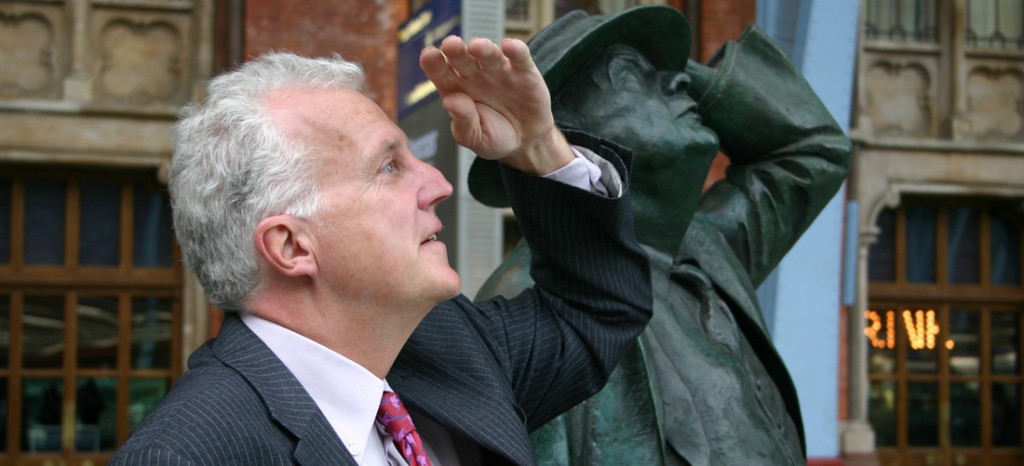The London mayoral election was a drab affair between two old big hitters known by their first names because they were both ‘characters’ who often seemed more interested in appearing on Have I Got News For You than running London.
Their transport policies were mired in the old ‘predict and provide’ model which was all about accommodating growth and expansion, rather than trying to adapt the capital to the needs of the 21st century. In fact, apart from Ken Livingstone’s promise to reduce fares, which was actually perfectly feasible despite the scorn poured on the idea by Boris Johnson’s team, the two transport manifestos differed little. Sure Johnson banged on about ‘driverless’ trains, but that was an obvious ploy to fool the public into thinking that this would end strikes when, in fact, trains would still need to be staffed, but his manifesto was in the same ‘let’s deliver more transport’ as Livingstone’s. Indeed, in that respect, Johnson even said he would secure a change in industrial relations legislation in order to ensure there is a 50 per cent turnout in ballots before a strike can be called, hardly something in his power.
However, apart from these rather pathetic attempts at putting some clear blue water between the two manifestos, there was precious little to distinguish them. So over the next four years, the victor, Johnson promises to reduce Tube delays by 30 per cent, a completely fatuous commitment, provide 600 new buses (without specifying whether they would replace old ones) and ‘never introduce London-wide congestion charge or a £25 charge on family cars’.
This is thoroughly dispiriting stuff. There is absolutely no imagination or vision. While forward thinking cities such as Amsterdam and Paris are looking at ways of developing their cities in a way that will no longer be dominated by the car, all Johnson is promising is more of everything. On the roads, not slowing down traffic flows is at the root of his vision of transport, and that fails to take into account the fact that this poses a risk to other road users.
Johnson points to his bike hire scheme – actually an idea nicked from Livingstone – as a way of illustrating his commitment to cyclists. However, there is no getting round the fact that there is a limited amount of road space and that the days of expanding the network in central London are long gone. No one is going to promote the idea of cutting a swathe through built up areas in order to build roads.
Therefore something has to give but there is a failure to recognise that. Livingstone began to understand that notion when he introduced the congestion charge without putting it to an electoral test. He even began to expand it with the western extension but then lost his nerve, promising before this election that he would not reinstate it after Johnson had, despite the loss in revenue and the predicted increase in traffic, scrapped it.
The desire to, say, have more cyclists on the streets means that other road users will be inconvenienced. That is clearly happening already in London. The sheer mass of cyclists in the centre, following steady year on year increases in the order of 10 per cent or more for several years, means that a critical mass is at times reached with cyclists being the dominant mode. This presented the mayoral candidates with a fantastic opportunity. They could have understood the logic of this and begun to give non-motorised modes far greater priority in central London.
Think of the successes this has created already. Leicester Square has been pedestrianised for two decades now and no one would think of bringing back cars. Similarly, Livingstone part pedestrianised Trafalgar Square, amid howls of protests from motoring groups and taxi drivers, and yet the result has been to greatly enhance London’s environment.
What is needed is a mayor brave enough to see through the logic of that process. London should have a continuing and ongoing programme of improving the central environment for pedestrians. Parliament Square, with that dismal green in the middle, is an obvious candidate and yet Johnson, during his first term, scrapped the idea of part pedestrianizing it. The most ambitious scheme would, of course, be Oxford Street which is a fume-ridden overcrowded thoroughfare thanks to the continued policy of allowing buses and taxis and, indeed, not policing the ban on cars.
The same goes for cycling. There are countless streets in the city that could be turned into cycle lanes. Two way roads could be made one way to accommodate bi-directional cycle lanes. It requires vision and an understanding of what transport is for, but Johnson, despite being an occasional cyclist himself, has no understanding of the issues.
Commercially all this makes sense. People arriving in cars are always too worried about paying vast prices for their parking to do any casual shopping. It is public transport users who spend the money. Transport is not an end in itself, and yet it is presented as such by the politicians. What people want is accessibility, not mobility, and that is a very different thing. By continuing to favour the car, and failing to understand that this is how a modern city’s transport needs should be framed, the next four years will be wasted with billions spend on transport infrastructure and very little on improving the city.
